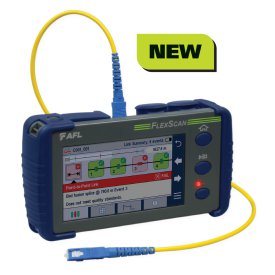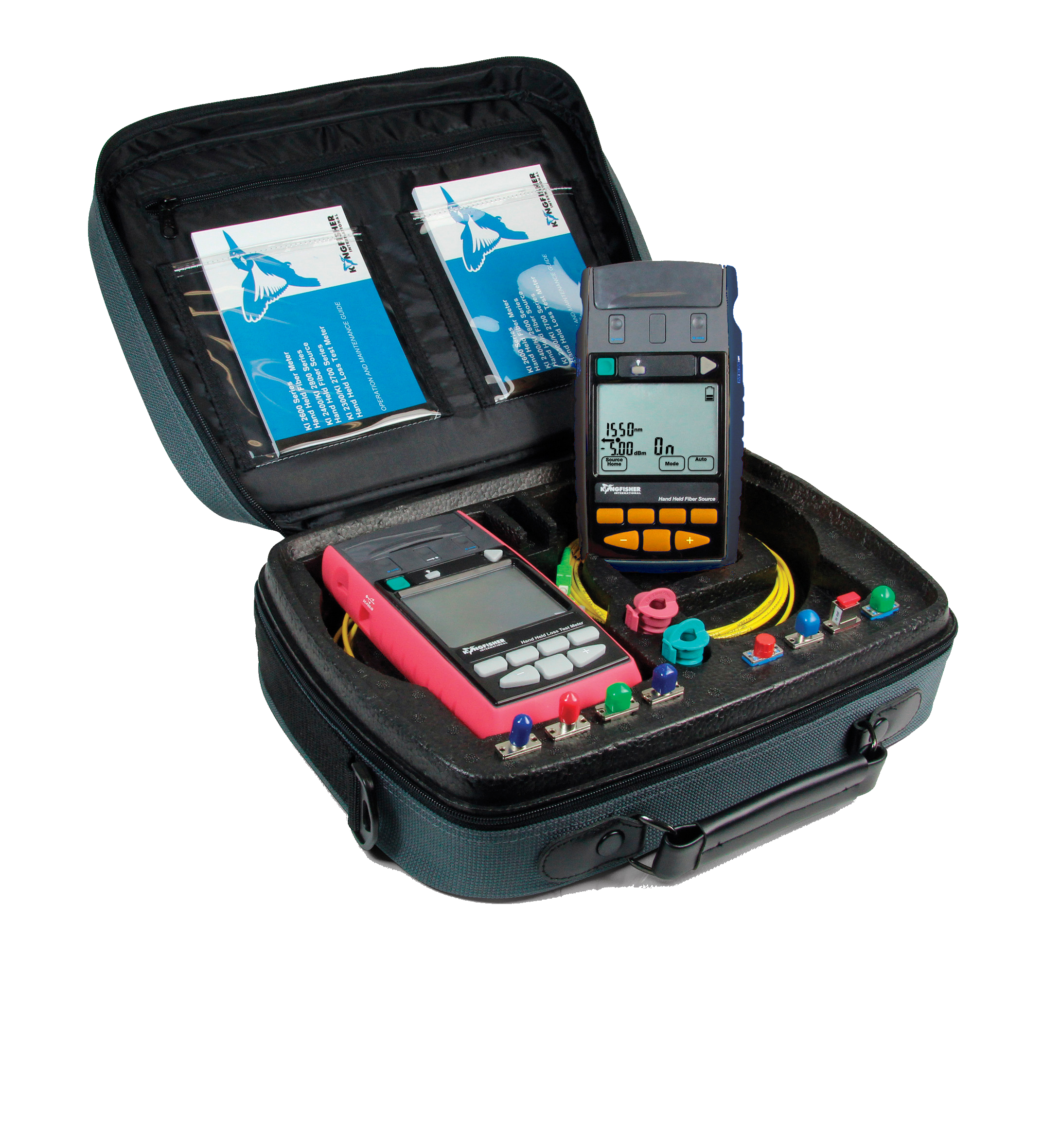FAQs about fibre testing equipment in fiber optic maintenance
Wiki Article
Discovering the Impact of Robotic Vision on Modern Manufacturing Techniques and High Quality Control
Robotic vision innovation is changing the landscape of contemporary production and quality assurance. By integrating innovative imaging systems and man-made intelligence, makers can accomplish unmatched degrees of accuracy and efficiency. This shift not just optimizes production procedures but also addresses essential difficulties in preserving product standards. As industries significantly rely on these innovations, the implications for future manufacturing methods remain to be fully discovered. What will this mean for the competitive characteristics of the market?Understanding Robotic Vision Innovation
Robotic vision innovation acts as the backbone of automation in contemporary production. It encompasses the use of cams, sensors, and fabricated knowledge to make it possible for robotics to analyze and react to aesthetic details from their setting. This modern technology enables robots to identify, locate, and review items, making them efficient in executing complex jobs such as setting up, evaluation, and product handling with accuracy. The integration of artificial intelligence formulas even more boosts the capability of robotic vision systems, permitting them to adjust to varying conditions and enhance over time. By processing images and data in real-time, robot vision systems can facilitate faster decision-making and reduce errors in producing procedures (fibre testing equipment). This innovation not only enhances functional performance yet additionally ensures that quality criteria are satisfied continually. As the production landscape remains to evolve, understanding the intricacies of robotic vision innovation ends up being vital for leveraging its possible totallyBenefits of Robotic Vision in Production
Robotic vision technology supplies significant benefits in manufacturing by enhancing precision and accuracy in tasks such as quality assurance and assembly. This boosted level of information warranties that items fulfill stringent requirements, reducing waste and remodel. In addition, the combination of robot vision can lead to raised manufacturing performance, allowing makers to enhance their procedures and attain higher result prices.Improved Precision and Accuracy
In modern manufacturing, improved precision and accuracy are crucial for optimizing production processes and guaranteeing item top quality. Robotic vision systems allow machines to perform intricate jobs with exceptional consistency. These systems use sophisticated imaging innovations to detect minute information and variants in materials, parts, and finished products. By assessing visual information in real-time, robot vision significantly decreases human error, bring about less problems and greater high quality requirements. Furthermore, enhanced accuracy in dimensions and positioning facilitates better placement in assembly procedures, which is vital for detailed styles. Eventually, the combination of robot vision not only bolsters the integrity of making outcomes yet additionally promotes self-confidence among consumers pertaining to item honesty and efficiency. This accuracy is crucial in industries where top quality is extremely important.Enhanced Production Effectiveness

Makers are progressively transforming to vision systems to improve production efficiency throughout numerous processes. These innovative systems enable real-time evaluation and monitoring, substantially minimizing downtime created by mistakes or defects. By incorporating robot vision, firms can automate high quality control, enabling for faster identification of concerns and decreasing the requirement for human intervention. This leads to streamlined workflows, as robots can swiftly adjust to changes in manufacturing demands without compromising accuracy. Vision systems help with much better inventory administration by accurately tracking components and items, ensuring ideal resource utilization. Ultimately, the adoption of robotic vision not just improves performance however also adds to greater result rates, lowered operational prices, and boosted total efficiency in the production field.
Enhancing Quality Assurance Processes
Robotic vision innovation substantially enhances quality assurance processes in manufacturing by employing accuracy examination methods. These innovative systems assist in real-time issue discovery, ensuring that items meet rigorous quality criteria. Consequently, makers can reduce waste and enhance overall effectiveness.Accuracy Assessment Techniques
Precision inspection strategies have changed top quality control procedures in manufacturing, enabling the discovery of min flaws that conventional techniques may neglect. These methods leverage advanced imaging modern technologies, such as high-resolution video cameras and laser scanning, to accomplish unparalleled precision. By utilizing robot vision systems, producers can automate evaluation tasks, guaranteeing regular performance and reducing human error. The combination look at here of maker learning algorithms in addition boosts these systems, enabling them to adapt and enhance in time. On top of that, accuracy examination facilitates the recognition of subtle variants in product dimensions and surface coatings, which can substantially impact total item high quality. Because of this, suppliers can implement restorative actions a lot more quickly, inevitably leading to lowered waste and enhanced client fulfillment.Real-Time Issue Detection
Taking advantage of sophisticated imaging innovations, real-time flaw discovery transforms top quality control procedures in production. By integrating high-resolution cams and sophisticated algorithms, makers can promptly determine abnormalities throughout production. This technology promotes immediate rehabilitative actions, minimizing waste and improving overall effectiveness. Real-time systems evaluate products as they move along the assembly line, guaranteeing that issues are spotted and resolved right away manufacturing timetables. Additionally, the application of artificial intelligence boosts the accuracy of these systems, allowing them to adapt to brand-new flaw patterns in time. Subsequently, suppliers gain from boosted item high quality and reduced functional prices. Inevitably, real-time issue discovery not just streamlines processes but likewise cultivates a society of continual renovation in modern-day manufacturing environments.Real-Time Data Analysis and Choice Making
In the vibrant landscape of manufacturing, real-time data analysis equips systems to make swift, notified choices. By leveraging innovative robotic vision technologies, makers can gather and process large quantities of information instantly. These systems analyze aesthetic inputs to keep track of production processes, making certain that any kind of inconsistencies from high quality requirements are identified and attended to quickly. Suppliers can optimize procedures by reapportioning sources and adjusting workflows based on real-time understandings.The assimilation of data analytics enables for anticipating maintenance, where potential tools failures are prepared for before they interrupt manufacturing. This positive strategy reduces downtime and enhances general performance. robotic vision. The capacity to make data-driven decisions in actual time substantially minimizes waste and boosts item quality, enabling makers to react to market demands quickly. As a result, real-time information evaluation not just simplifies production but also promotes a culture of continual renovation in modern-day manufacturing settings
Obstacles in Applying Robotic Vision Solutions
Implementing robotic vision systems in producing offers a variety of challenges that can impede their effectiveness. One significant challenge is the intricacy of integrating these systems with existing equipment and operations. Producers frequently deal with compatibility concerns with tradition tools, resulting in enhanced expenses and downtime. In addition, the irregularity in product shapes, sizes, and products can make complex the calibration of vision systems, necessitating comprehensive training and fine-tuning.One more challenge lies in click this refining large volumes of aesthetic information in actual time. High-performance computer sources are important, which may need additional financial investment in framework. There is a shortage of competent workers qualified of taking care of and preserving these advanced systems, leading to potential operational inadequacies. Ensuring the reliability and precision of robot vision systems under varying ecological problems positions a constant difficulty. Dealing with these problems is vital for optimizing the potential benefits of robot vision in production.
Future Patterns in Robotic Vision for Production
As advancements in artificial intelligence and artificial intelligence remain to develop, the future of robot vision in manufacturing shows up increasingly promising. Arising fads show a shift towards a lot more advanced imaging technologies, such as 3D vision systems and hyperspectral imaging, which will certainly enhance precision in quality assurance processes. Integration with the Internet of Things (IoT) will certainly make it possible for real-time information evaluation, enabling robotic systems to adjust promptly to adjustments in the manufacturing environment. In addition, the development of collective robots (cobots) outfitted with innovative vision capabilities go to these guys is expected to help with seamless human-robot communications, enhancing effectiveness and safety on the manufacturing facility floor. Furthermore, the unification of edge computing will certainly encourage robot vision systems to refine information locally, lowering latency and allowing faster decision-making. These technologies will not only enhance manufacturing processes however also greatly enhance item quality, placing robotic vision as a keystone of future industrial operations.Regularly Asked Questions
Just How Much Does Robotic Vision Technology Commonly Expense?
Robotic vision modern technology generally sets you back between $10,000 and $100,000, depending on the complexity and requirements. Factors influencing price include sensor top quality, software abilities, and integration demands, making it vital to examine certain task needs.What Industries Are Many Affected by Robotic Vision Innovations?
Robotic vision advancements greatly impact markets such as production, automobile, electronics, and food processing - optical fibre diameter analyser. These industries profit from improved automation, enhanced high quality control, and boosted effectiveness, resulting in streamlined operations and minimized labor costsCan Robotic Vision Systems Be Integrated With Existing Machinery?
Robotic vision systems can certainly be integrated with existing equipment. This integration enhances functional performance, permitting producers to utilize progressed technologies without the requirement for complete overhauls, thereby enhancing manufacturing procedures and preserving top quality standards.
What Abilities Are Required to Operate Robotic Vision Solutions?
Operating robotic vision systems demands effectiveness in shows, an understanding of artificial intelligence, knowledge of photo processing strategies, and the ability to repair software and hardware issues, making sure seamless integration and excellent performance within producing settings.Exist Any Type Of Safety And Security Worry About Robotic Vision in Production?

Report this wiki page